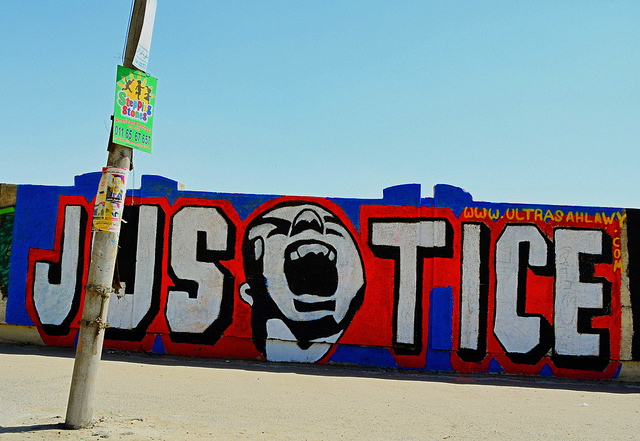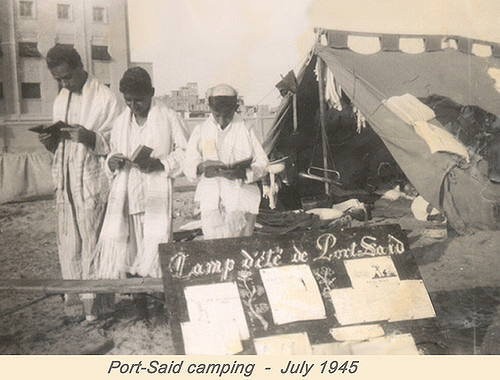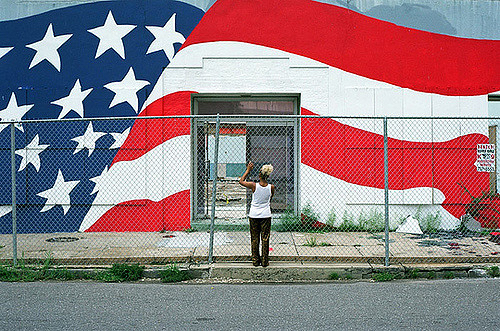For someone who grew up in an athletic family, I have a hard time paying attention to sports. It’s not so much the games as it is the process of navigating the spectacular cultural industry that surrounds them.
While ESPN is arguably the trailblazing force behind the mashup of live broadcasting, journalism, advertising, and punditry, the once savvy blend of highlight reels, witty reporting and Dadaist humor that came to define an emerging genre of sports infotainment has since mutated into an audio-visual monster truck rally that sprawls across cable television, satellite radio, 24-hour news cycles, social media, and the blogosphere.
For the most curious and hedonistic of sports fans, this brave new world offers unprecedented access to information, debates, sports betting, fantasy leagues, gaming, and a global network of players and their followers.
Yet despite the prospects of this putative global sports village, some things have not really changed. Indeed, much has gotten worse. Professional sportswriters are increasingly facing the same drastic cutbacks and layoffs imposed on their peers in both newspaper and magazine publishing, while mammoth media corporations have consolidated their power and influence through a combination of deregulation-fueled mergers, exclusive licensing agreements, and tremendously lucrative broadcasting contracts with specific teams, universities, conferences, and even entire leagues.
What remains is a sports media industry in which the profit imperative has led to, among other things, less diversity in both media ownership as well as sports coverage itself. For example, a recent scholarly study of 20 years of televised sports coverage found that, despite women’s participation being at an all-time high, women’s sports received around 1.5% of all airtime in 2009, both locally and nationally, with 72% of all airtime being devoted to just three men’s sports (football, basketball and baseball—regardless of the season.)
In addition to this trend, one can chart the emergence of an army of sports ‘experts’ whose knack for inane analysis and serious-sounding platitudes is rivaled only by the inside-the-beltway punditocracy that drowns American political discourse in its verbal diarrhea. As if listening to the formulaic, repetitive post-game commentary from players and coaches wasn’t already grating enough, the practice has been elevated into a gilded craft by this new professional league of suit-clad ex-sports stars, goateed loudmouths, radio shock-jock disciples, and wanna-be coaches who dominate mainstream sports media.
While seemingly benign, this cacophony of commentary trades in statistical fetishism and serves to both cultivate and echo the kinds of shallow, conservative analyses of sport that are so commonplace they make Bryant Gumbel’s Real Sports seem as dangerous and incisive as Jeremy Scahill’s warzone reportage.

The problem is not only a significant narrowing of the mass media funnel through which most Americans perceive sport itself. It’s the range of discussion and debate about the entire matrix of socioeconomic, cultural and political issues which sports are tied to. Against this backdrop, two main strands of dialogue have emerged that effectively reframe the issues and offer a direct challenge to the dominant narratives told about politics and sports. One of these ‘camps’ consists of critical scholars and a few public intellectuals who do exciting work in sociology of sport and physical cultural studies (among other fields of study,) and the other camp largely consists of…well…Dave Zirin.
If you are a Lefty sports fan living in the United States, there’s a good chance you’re already a fan of Zirin, or you’ve at least stumbled across him, whether via his column in The Nation, his satellite radio show Edge of Sports, his slew of media appearances, his Media Education Foundation film, or his books. For those unfamiliar with Dave Zirin, one could describe his body of work as a blend of sports journalism, social analysis, and accessible cultural criticism that seeks to decimate the widely accepted notion that sports and politics don’t mix.
This is a tough pitch to say the least, particularly in the US where professional athletes and the managerial class of sports professionals routinely distance themselves from political affairs, or at least in ways that fall outside the accepted ideological bounds of flag-waving and offering support for nearly every corporate venture or military endeavor. In this context, it is hard to make the case that American sports are really that politically significant, even to someone like myself, who admired the way in which Zirin’s previous books channeled the spirits of Howard Zinn (A People’s History of Sports in the United States) Chuck D (Welcome to the Terrordome,) and the unsung communist sports writer, Lester Rodney (What’s My Name, Fool?) as a means to stitch the narrative together.
Indeed, I probably wasn’t the only reader who walked away from those texts feeling excited about the new world of sports and politics that were opened up to me. And yet I was also left a bit skeptical: it was as if 90% of Zirin was the dynamic man on the soapbox speaking truth to power, and 10% was the old wingnut at the political protest who traps you into hearing his Negri and Hardt-esque theory of everything simply because you took one of his flyers. All joking aside, my reservation was not due to Zirin’s arguments and examples, and certainly not for his lack of enthusiasm. Rather, it was due to the way in which the ‘political’ story of US sports is a difficult yarn to spin when one gets beyond some of the key public figures that animated Zirin’s earlier work, i.e. Muhammad Ali, John Carlos and Tommie Smith, Billie Jean King, etc.

But in the eight years since Zirin published his first manuscript, a tidal wave of political scandals and events has washed over the seemingly autonomous world of athletics, leaving many fans of amateur, collegiate and pro sports asking the kinds of vital questions about class, gender, race and labor that, according to Zirin, the powerful “guardians of sport don’t want asked.” As a follow-up to his timely critique of the athletic- industrial complex in Bad Sports: How Owners Are Ruining the Games We Love, Zirin’s newest book, Game Over: How Politics Has Turned the Sports World Upside Down, dives headfirst into these tumultuous waters and wades through some of the best examples that show how sports can “tap into sentiments for social change.”
Game Over is split into nine chapters, sandwiched between an instructive introduction and a cleverly titled “Post-Game” conclusion that arguably provides Zirin’s most concise statement on why thinking critically about the politics of sports is so important: “Sure, we may desire for sports to be solely about play. But here’s the thing: this cheapens not only the deep relevance of sports to our society but also the courage of those athletes who do take a stand. We do an injustice to all of them—and to what’s best about sports—when we sanitize the past and rip athletics out of the political and cultural context in which it has always belonged.”
The first chapter delves into some of the labor battles that not only defined US professional sports in recent years, but also spilled into the broader political terrain in which Occupy became both a movement and battle cry in the United States. Beginning with a brief lesson on the public ownership structure of the Green Bay Packers and the team’s vocal support for public sector workers in Wisconsin, Zirin reframes the debate over labor in pro sports that is so commonly portrayed – and thus misunderstood – as a mere tiff between millionaires (players) and billionaires (owners.)
Zirin contrasts the ground won by the NFL Players Association union during the 2011 lockout with the results of the NBA lockout that ultimately benefitted the team owners who are perpetually subsidized by millions of taxpayer dollars—a situation not unlike that of the NFL, which saddled the city of Indianapolis with $43 million in costs for the privilege of hosting the 2012 Super Bowl. The knotty relationship between players, owners and labor is a theme that comes up throughout the book, including the fourth chapter, where Zirin adeptly outlines the various ways in which team owners and executives routinely leverage their own interests against those of the public by effectively siphoning off public tax dollars in order to build their franchises new stadiums, often in cities with under-funded school districts, crumbling infrastructure and high unemployment.

Chapter Seven deals with a different aspect of league dynamics by exploring the divergent responses that professional players, officials and team owners had to Arizona’s passage of the vigorously anti-immigrant bill, SB 1070; a number of Major League Baseball players raised concerns and initially threatened to boycott the All-Star game unless it was moved from Arizona to a different location, while NBA players on the Phoenix Suns joined with their team owner to proudly sport ‘Los Suns’ jerseys on their Cinco de Mayo playoff game against the San Antonio Spurs in 2010. Finally, in Chapter Nine, Zirin reflects on the racist overtones of policies enacted by NBA Commissioner David Stern, and the manner in which the institutional norms of his administration built up “reservoirs of bad will” throughout the last decade.
Game Over looks outside the US to discuss the role of both soccer and zealous soccer fan clubs (known as “ultras”) in the Arab Spring, though most of the emphasis is placed on the significant political contributions that ultras made during the Egyptian revolution, where rival clubs not only worked together to galvanize support against the Mubarak regime, they formed committees, secured neighborhoods, built barricades and actively fought state police forces in Cairo.
After briefly turning attention to clashes between ultras and authorities in Port Said, Egypt, Zirin concludes with the story of Bahraini star soccer player A’ala Hubail and his brother/teammate Mohamed Hubail, who both were kicked off the national team, arrested, tortured, and publicly condemned for their participation in protests against the ruling regime (over 150 different players, coaches and referees were also arrested, with some sentenced to significant prison terms, including Mohamed Hubail.)
Zirin further expands the scope of international analysis, with an examination of how the Olympics and World Cup competitions have become the primary mechanisms through which sporting ‘mega-events’ have come to influence the social and cultural policies in cities throughout the world. Like other public critics, including former Olympian and current professor Jules Boykoff, Zirin peels back the pleasant public façade of the games in order to show how they’re increasingly used to promote neoliberal socioeconomic interests while suppressing all forms of dissent that call attention to such practices.
College athletics enter Zirin’s radar in the last half of the book, beginning with a rightfully scathing critique of the enormous scandal at Penn State University, where the arrest and subsequent conviction of former football coach/child rapist, Jerry Sandusky, revealed how university officials and disgraced head football coach, Joe Paterno, engaged in patterns of criminal behavior by either ignoring or actively hiding evidence of Sandusky’s crimes in the name of preserving the school’s Nike-emblazoned ‘brand’ image.
Using the so-called ‘sex abuse’ (people apparently love vague euphemisms in lieu of actually saying the word RAPE) scandal at PSU as a point of departure, Zirin makes a broader as well as convincing argument about the NCAA’s systematic exploitation of college athletes. More than a mere indictment of the NCAA, Game Over frames the issue in an appropriate manner, which is to say, in terms of how large public universities are seemingly hell-bent on transforming academics into a meager adjunct of their (men’s) sports programs.
Game Over also considers gender, sexuality and race in sports, which are arguably the subjects that best showcase Zirin’s talents as a writer. In addition to a smart analysis of sexism and homophobia centered around the forced gender testing of South African runner Caster Semenya, his discussion of GLBT athletes is especially timely given that NBA basketball player Jason Collins recently became the first active male athlete on a professional US sports team to come out as gay—a declaration that has garnered tremendous media coverage, though most of it devoid of both the historical context and attention to pioneering gay athletes featured in elsewhere in the book.
Both here and in his discussion of race towards the Game Over’s close, Zirin identifies how the social norms that foster discrimination actually play out in sports, whether in obvious situations, such as the African American NHL hockey player, Joel Ward, being called “N-word” by opposing fans on Twitter; or in cases where racist attitudes and assumptions—the supposed vestigial markers of a bygone era—inform the ways in which the dog-fighting charges against NFL quarterback Michael Vick, were articulated to the public.
Those looking for detailed, nuanced explorations of the issues raised in Zirin’s work may occasionally find themselves wanting for more, as his style is fast paced and his approach to some rather large topics (for example, ‘sexuality and sports’) can, at times, be more pedagogical than comprehensive. But to be fair, one can hardly be faulted for making complex issues more palatable to readers, especially when Zirin shows how seemingly simplistic issues are also much more complicated then they actually appear.
The range of people and politics Zirin analyzes have their own significant histories and problematics that cannot be accounted for in any single text. Game Over would be a much different and, most likely, a much less accessible and engaging book had he taken that route. Notwithstanding friendly criticisms that might be lodged by sports historians or sociologists, the main critics of Game Over will undoubtedly be those who stridently support the notion that politics really do have no place in sports, and will therefore be supremely irritated by Zirin’s unabashedly progressive politics.
Of course, to many other readers, including this reviewer, this is one of Zirin’s refreshing merits as an author. Because in addition to being a sports writer who consistently trashes the false idols and corporate institutions that both buttress and animate the modern sports industry, he’s a white person who deftly tackles racism, a man who grapples with the complexities of gender discrimination, a New York-raised Jew who shows solidarity with Arab political struggles, and above all else, a historically-minded activist who is wise enough to recognize that staking out such positions is neither unique, brave, nor deserving of praise. It’s simply a matter of responsibility for any socialist worthy of the name.
What really separates Zirin, however, from so many culture critics and progressive journalists is not only his ability to effectively map radical politics through the cartography of sport, but to do so with a combination of humor, compassion, and journalistic sincerity that translates as well in his writing and public talks as it does in his growing number of national media appearances. Consequently, if the only people who will be truly be disappointed by Game Over are the kinds of American sports fans who call soccer players “fags”, Dave Zirin has done us all a favor by continuing to push dialogue about sports and politics into a new and exciting playing field.
Photographs courtesy of vagabondblogger, aacool and giopuo. Published under a Creative Commons license.






Thanks for this. I’d add one more thing about Zirin: he loves sports. He’s not just chastising crankily from the outside.
True story, Steve. It’s a good point and one I should have made explicit in the essay.